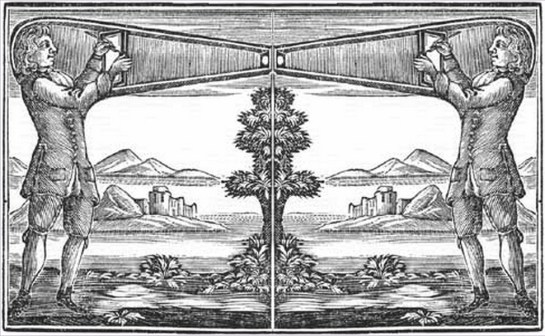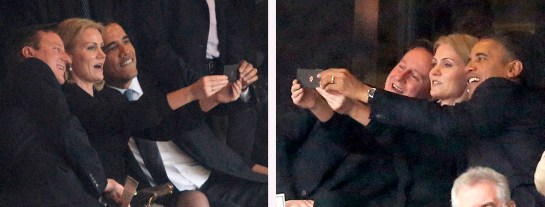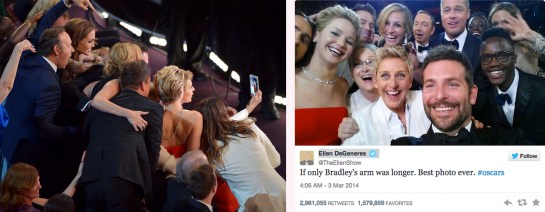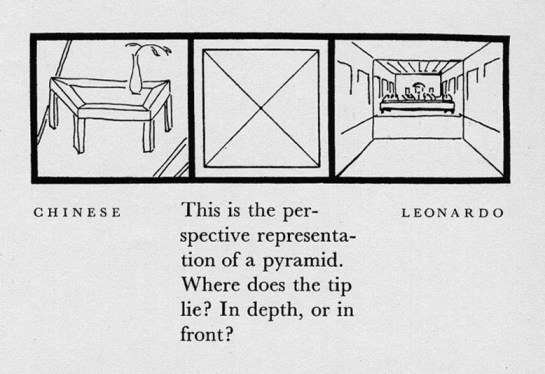The Machinations of Photography
The title of this post is borrowed from the subtitle of the essay ‘A. and Pangeometry’, written in 1925 by El Lissitzky. It underlines the mutual relation beween art and perception but also his personal conviction that art has the power to challenge our visual habits. Click to read the integral text.
Photography is generally understood as a means to produce images of reality. The analogy between the optical functioning of the photographic lens and our human eye even makes us believe that photography generates an accurate representation of what we see. But photography is a ‘medium’ and, as such, it mediates between the reality it represents and the other reality it – by this very process – engenders. Photography moreover is not only a machinery that produces images for us to look at, it also produces a specific way of looking.
Over the centuries there have been many developments in the way reality is visually represented. In the West the Renaissance eventually brought us the sophisticated system of central perspective. This system was not invented at once but went through different stages, each one adding a piece to the puzzle of ‘accurate’ visual reproduction. Da Vinci describes perspective as “nothing else than seeing a place behind a plane of glass, quite transparent, on the surface of which the objects behind that glass are to be drawn. These can be traced in pyramids to the point in the eye, and these pyramids are intersected on the glass plane”. In this perspectival drawing system three crucial elements make their apparition. The first one is the beholder’s ‘point of view’ formed at the tip of the visual pyramid. The second is the ‘vanishing point’ situated behind the glass, at the tip of the opposite pyramid, where all lines coincide in the far distance. The third is the ‘picture plane’ which forms the image and from which the two visual pyramids emanate in opposite directions. For the first time in history the invention of the point of view accords a central place to the beholder. By subordinating the entire spatial arrangement to this single ‘point in the eye’, central perspective captures the gaze. The image takes the appearance of a theatrical stage to be looked at from a fixed position by an immovable eye.
What happened in painting at that time can be understood as a blueprint for the configuration of the photographic – lens-based – image centuries later. In our digital age this system has been perfected by computer software, able to perform corrections to the lens curvature or render reality in 3D by applying complex algorithms. But despite this technological evolution the photographic image remains the result of a representation method based on a fixed point of view corresponding to a fixed vanishing point. One could even boldly say that the photographic operation is a construction still very similar, albeit in miniature, to the first perspective machines from the Renaissance.
[1] In his treatise on painting entitled ‘Della Pittura’ from 1435, the architect and artist Alberti deals with the geometrical aspects of vision. He was the first to transform Euclids ‘cone of vision’ into a ‘visual pyramid’ and introduced the new constructive element of ‘the picture plane’. Later in the text he refers to it as an open window.
In our work entitled ‘The Master of Perspective’ we stage a well-known perspectival diagram showing the correlation between the viewer’s eye and the vanishing point located on the horizon. The Renaissance architect Alberti introduced this technique of the ‘construzione leggitima’ to create the effect of three-dimensional space on a flat surface. [1] In the photo this effect seems to be reversed. The visual rays originating – as yellow ropes – from the eye of the ‘Master’, gradually loose their physical properties as they recede towards the horizon and converge in a ‘punctus centricus’. The flat lines of Alberti’s diagram superimposed on the ‘deep space’ of the vista, uncover and enhance at the same time the artificial and illusionary character of the central perspective.
Imaginary Space versus Optical Space
[2] In his essay El Lissitzky muses: “It is generally accepted that perspective representation is the clear, objective, obvious way to represent space. It is said that, after all, the camera also works perspectivally and at the same time one is forgetting that the Chinese once built the object-lens with concave instead of convex lenses as we have, and so would also have produced an objective and mechanical image of the world, yet quite a different one”.
Both the perspectival system used in painting and the optical perspective of the photographic lens should be considered in terms of visual illusions. This proposition opens new possibilities for representing reality that are not based on the principles of a fixed viewpoint. In his fascinating essay “A. and Pangeometry” from 1925, El Lissitzky formulates his concern with the fact that “perspective defined space and made it finite, then enclosed it”. In his art he was looking for ways to “create a new expression of space”, defining his task of “forming imaginary spaces by means of a material object”. [2] He was interested in constructing a multi-dimensional space, which would “produce an effect on us through the apparatus of our senses”. El Lissitzky described Suprematism as a new kind of representation that “created the ultimate illusion of irrational space, with its infinite extensibility into the background and the foreground”. [3] El Lissitszky’s version of Suprematism – by the extensive use of parallel perspective – shared visual characteristics with the axonometric representation of space in early Chinese and Japanese art. In the words of architecture theorist Difford on El Lissitszky’s Proun paintings: “axonometry removes the vanishing point to infinity and thereby takes it out of the picture”.
[3] El Lissitzky uses the term of ‘irrational space’ to describe a space where “the distances are measured only by the intensity and the position of the strictly-defined colour-areas”.
In axonometric perspective the beholder doesn’t look at the scene ‘before’ him as in linear perspective but he finds himself included in it. As sinologist Joseph Needham imaginatively points out: “with the Chinese style the ground surface starts from the distance and slips past under the spectator’s feet to a goal infinitely beyond, i.e. below and perhaps behind him”. Art historian George Rowley also compares the Western and Chinese approaches towards the representation of space in his book ‘Principles of Chinese Painting’: “We [the West] restricted space to a single vista as though seen through an open door; they [the Chinese] suggested the unlimited space of nature as though they had stepped through that door and had known the breath-taking experience of space extending in every direction and infinitely into the sky”. Axonometric perspective has another unique quality as architect Claude Bragdon wrote in his legendary book ‘The Frozen Fountain’ in 1932: ‘[Axonometric] perspective, less faithful to appearance, is more faithful to fact; it shows things nearly as they are known to the mind. Parallel lines are really parallel, […] the size of everything remains constant because all things are represented as being the same distance away and the eye of the spectator everywhere at once. [4] When we imagine a thing, or strive to visualize it in the mind or memory, we do it in this way, without the distortion of ordinary perspective. [Axonometric] perspective is therefore more intellectual, more archetypal, it more truly renders the mental image – the thing seen by the mind’s eye”.
[4] Needham cites art historian Benjamin March who points to the paradox of parallelism in linear perspective: “while the European system depended tacitly on the non-Euclidean postulate that parallel lines meet at infinity, the Chinese (…) remained faithful to the postulate that parallel lines never meet at all, even in pictures”.
In our own work we have employed axonometry in a series of five photographs entitled ‘Sceneries’. These works show self-absorbed figures engaged in different activities: a man reading, a girl making a miniature landscape and children unfolding a map. For this series we created decors based on axonometric principles using a view camera as a reversed perspective machine. By fixing an axonometric drawing on the ground glass we were able to project and build a spatial anamorphosis in front of our camera. These pseudo-perspective structures allowed us to create photographs with parallel sight lines and hence without vanishing point, reminiscent of Japanese wood-block prints. Here the gaze of the beholder is no longer ‘captured’ by a vanishing point but is allowed to move freely through the image.
Optical Tactility and Haptic Vision
Seeing happens in the plane of the sensory in which the whole body is involved. Especially when we consider the visual experience of space, we need to explore how the experience of looking expands the ‘bodily’ properties of vision. In his book ‘Mimesis and Alterity’ anthropologist Michael Taussig insists “on breaking away from the tyranny of the visual notion of image […] to emphasize the bodily impact of imaging. […] You move into the interior of images, just as images move into you”. Similarly Duchamp stated in 1975 that: “The painting should not be exclusively retinal or visual”. As described by artist-theorist Ursula Berlot in ‘Duchamp and the notion of Optical Tactility’ Duchamp’s “emphasis on the non-retinal experience of art can be comprehended as an initiative for searching the new forms of perceptual or sensual dimensions in the constitution of an artwork. The idea is manifested in his artwork as a constant aspiration to span the perceptional experience into a domain of discernable crossings between the visual and the non-visual, the sensible and the intelligible”. This line of thought can further be found in ‘A Thousand Plateaus’ in which Gilles Deleuze and Felix Guattari define ‘smooth space’ as a ‘tactile’, or rather ‘haptic’ space, as distinguished from optical space. They state: “‘haptic’ is a better word than ‘tactile’ since it does not establish an opposition between two sense organs but rather invites the assumption that the eye itself may fulfil this non-optical function”.
A question then arises: Can photography escape the exclusively retinal or optical? And which characteristics would have such a ‘haptic’ photographic vision? If we follow Deleuze and Guattari this haptic quality could be related to close vision: “Where there is close vision, space is not visual, or rather the eye itself has a haptic, nonoptical function: no line separates earth from sky, which are of the same substance; there is neither horizon nor background nor perspective nor limit nor outline nor form nor centre; there is no intermediary distance, or all distance is intermediary”. When we take into account some of these properties we could advance that Chinese and Japanese art have developed similar visual features that may facilitate such a ‘haptic’ vision. According to Rowley: “Because of our inclination towards reason, science and the expression of human emotion, it was inevitable that Western painting should depend on forms. […] In China the emphasis on intuition, imagination and the moods of nature led to the importance of the mysterious, the intangible and the elusively expressive. Both East and West sought reality, but in one, the universal truth was to be captured in the forms, and in the other, the mysterious resided in the forms and something behind the forms”.
The Japanese Detached Gaze
[5] This term bears resemblance with another Japanese term ‘riken no ken’. It means literally ‘the seeing of detached perception’. It was developed by Noh playwright Zeami Motokiyo in his treatise on theatre ‘Fushikaden’ from 1406.
In Japan a disposition toward a non-optical quality of vision can be found in the term bon yari shite, which means ‘watching with a detached gaze’, ‘looking in an unprejudiced way’ or literally ‘looking without seeing or perceiving’. [5] For centuries it has been used in the art of garden making as an important empirical method both to design and to perceive the garden space to it’s fullest extend. It encourages the beholder to look in a wandering and open-minded way in order to experience the subtle phenomena of nature. This form of ‘detached gaze’ should not be confused with the Cartesian notion of ‘detached perception’ used in the West to define a purely rational spectatorship, an objective point from which one can freely inspect the world in order to acquire scientific knowledge. Rather this Japanese ‘detachment’ is akin to Heidegger’s interpretation of the Kantian notion of ‘disinterest’ as “a state in which the artist lets the being manifest itself in its Being rather than immediately grasping it”. It is also related to the Chinese appreciation, in Rowley’s words, of the “law of reversed effort according to which the attention must not be too firmly fixed”. This kind of detachment not only resides in the absence of a fixed viewpoint but maybe even in the absence of the process of identification altogether. Architect and theorist Andrej Radman states in his book ‘Gibsonism’: “experience first happens, as it were, without me; it is only afterwards that I am able to claim it as ‘mine’”.
As we found out, this way of looking is deeply anchored in the Japanese visual sensibility and it silts through different aspects of present day culture including contemporary photography. We can find examples of a detached gaze amongst others in the work of Shoji Ueda. Some photographs in his book ‘Photography and Me’ show figures in a dune landscape from an oblique vantage point, often excluding the horizon and extending our field of vision to the peripheral. Indeed the protagonists are placed to the extreme left and right edges of the image, whereas the centre of the image is left ‘empty’ forming an abstract, undefined space. Another photographer who, in our opinion, instigates a detached gaze with his work is Toshio Shibata. His photographs display landscapes at the intersection of the natural and the built environment in a highly disorienting manner. Here the vantage point is at times extremely steep resulting in images almost flat in appearance, but giving at the same time a vertiginous feeling as if looking down from a weightless position in space. The theoretically paradoxal communion of the optical perspective of photography and the haptic bodily experience of vision is here at work, for the viewer to be experienced. Shibata describes his working process as “borrowing a landscape”: his photographs “are not images of the landscape but images from the landscape”. For Shibata it is essential that his images are instantly recognizable as belonging to reality, while creating a world of their own.
We believe haptic vision could also reside in the use of visual sequences or multi-perspectives. As we stated previously, our ‘natural’ visual experience is not based on a fixed vantage point but is deeply connected to our movement in space and time. According to psychologist J.J. Gibson “we can understand the perception of the environment only when we consider changes in the observer’s point of view”. In our recent work entitled Shadow-Light-Reflection we experiment with photographic sequences to reconstruct a landscape – for instance a cedar forest or a group of wild mimosa trees – from a multiplicity of viewpoints. In this series, consisting of diptychs and quadtychs, nature is not shown in an epic way, as a vista from a great distance: there is no horizon; an intermingling of branches, flowers and leaves engulfs the viewer. Unlike the famous sequences of Muybridge, showing different temporal stages of movement as slices of time, these photographic sequences, in reverse, create an arrangement of images as the extension of a single event in space. Here the position of the beholder no longer matches a single camera viewpoint but is, as it were, multiplied. The spatial relation between the different images functions, like in cinema, within the notion of the ‘hors-champ’ (or ‘out-of-field’). This refers to the capacity of certain images to create a sense of space-time, beyond what is immediately shown. The diverging viewpoints create a ‘moving focus’ causing the viewer to ‘scan’ the topography of the landscape and sense the space beyond the photographic frames.
We could say that haptic vision is only possible when we no longer consider photography as a re-presentation but as a presentation, as a model for reality. Such an attitude towards photography is needed if we wish to expand our perceptible experience and look at the world anew, with a detached gaze.
References
Berlot, Ursula (2011), ‘Duchamp and the Notion of Optical Tactility’, Art, Emotion and Value – 5th Mediterranean Congress of Aesthetics, http://www.um.es/vmca/proceedings/docs/41.Ursula-Berlot.pdf, accessed 20 August 2017
Bois, Yve-Alain (1981), ‘Metamorphosis of Axonometry’, Daidalos, No.1, 1981.
Bragdon, Claude (1932), ‘The Frozen Fountain’, New York: Alfred A. Knopf, pp. 61.
Difford, Richard J. (1997), ‘Proun: an Exercise in the Illusion of Four-Dimensional Space, The Journal of Architecture’, Vol. II.
El Lissitzky (1925), ‘A. and Pangeometry’, Europa Almanach, Potsdam: Gustav Kiepenheuer Verlag, pp.103-113.
Gibson, James J. (1978), ‘The Ecological Approach to the Visual Perception of Pictures’, Leonardo, Vol. II, Pergamon Press Ltd.
March, Benjamin (1927), ‘A Note on Perspective in Chinese Painting, The China Journal Vol. VII, No. 2, pp 69-72, http://library.uoregon.edu/ec/e-asia/read/artpers.pdf, accessed 20 August 2017
Needham, Joseph (1971), ‘Science and Civilisation in China’, Vol. IV, Part 3, Cambridge: Cambridge University Press, pp. 112-113.
Radman, Andrej (2012), ‘Gibsonism: Ecologies of Architecture’, Delft School of Design, Delft University of Technology, pp. 285.
Richter, Irma A. (2008), ‘The Notebooks of Leonardo Da Vinci’, Vol. I, Oxford: Oxford University Press, pp. 113-114.
Rowley, Georges (1947), ‘The Principles of Chinese Painting’, Princeton: Princeton University Press, pp. 14, 77.
Shibata, Toshio (2013), ‘Contacts’, Poursuite.
Spencer, John R. (1970), ‘Leon Battista Alberti. On Painting’, New Haven: Yale University Press, pp. 47-48.
Taussig, Michael (1993), ‘Mimesis and Alterity – A Particular History of the Senses’, London: Routledge, pp. 58.
Ueda, Shoji (2010), ‘La Photographie et Moi’, Tokyo: Crevis, pp. 20, 32, 34-35.
Verter, Mitchell Cowen (1996),’Viewing Power in Heidegger and Levinas’, Brown University, Providence, RI, 1996, http://www.waste.org/~roadrunner/writing/ViewingPower/DescartesAndNietzsche.htm, accessed 20 August 2017
Yusa, Michiko (1987), ‘Riken no Ken. Zeami’s Theory of Acting and Theatrical Appreciation, Monumenta Nipponica, Vol. 42, http://myweb.facstaff.wwu.edu/yusa/docs/riken.pdf, accessed 20 August 2017
This text was first published in 2014 in the biannual Arts journal ‘Philosophy of Photography’, Volume 4 Number 2, Intellect Journals ISSN 2010-3682, in 2014. See http://www.intellectbooks.com for more information.
























